Complete Solutions to Subjective of chapter KINETIC THEORY OF GASES AND FIRST LAW OF THERMODYNAMICS of Class 11 book with complete answers and questions
| Class 11 | PHYSICS |
| Chapter | KINETIC THEORY OF GASES AND FIRST LAW OF THERMODYNAMICS |
| CENGAGE PHYSICS | Subjective |
| Number Of Questions | 22 |
| Academic Year | 2023-24 |
Five grams of helium having rms speed of molecules `1000 m//s` and `24 g` of oxygen having rms speed of `1000 m//s` are introduced into a thermally isolated vessel. Find the rms speeds of helium and oxygen individually when thermal equilibrium is attained. Neglect the heat capacity of vessel.
03:12View SolutionConsider a vertical tube open at both ends. The tube consistss of two parts, each of different cross sections and each part having a piston which can move smoothly in respective tubes. The two piston which can move smoothly in respective tube wire. The piston are joined together by an inextensible wire. The combined mass of the two piston is `5 kg`and area of cross section of the upper piston is `10 cm^(2)` greater than that of the lower piston. Amount of gas enclosed by the pistons is `1 mol`. When the gas is heated slowly, pistons move by `50 cm`. Find the rise in the temperature of the gas in the form `X//R K`, where `R` is universal gas constant. Use `g = 10 m//s^(2)` and outside pressure `= 10^(5) N//m^(2))`.
 04:58View Solution
04:58View SolutionFig shows the variation in the internal energy U with the volume V of 2.0 mol of an ideal gas in a cyclic process abcda. The temperatures of the gas at b and c are 500 K and 300 K respectively. Calculate the heat absorbed by the gas during the process.
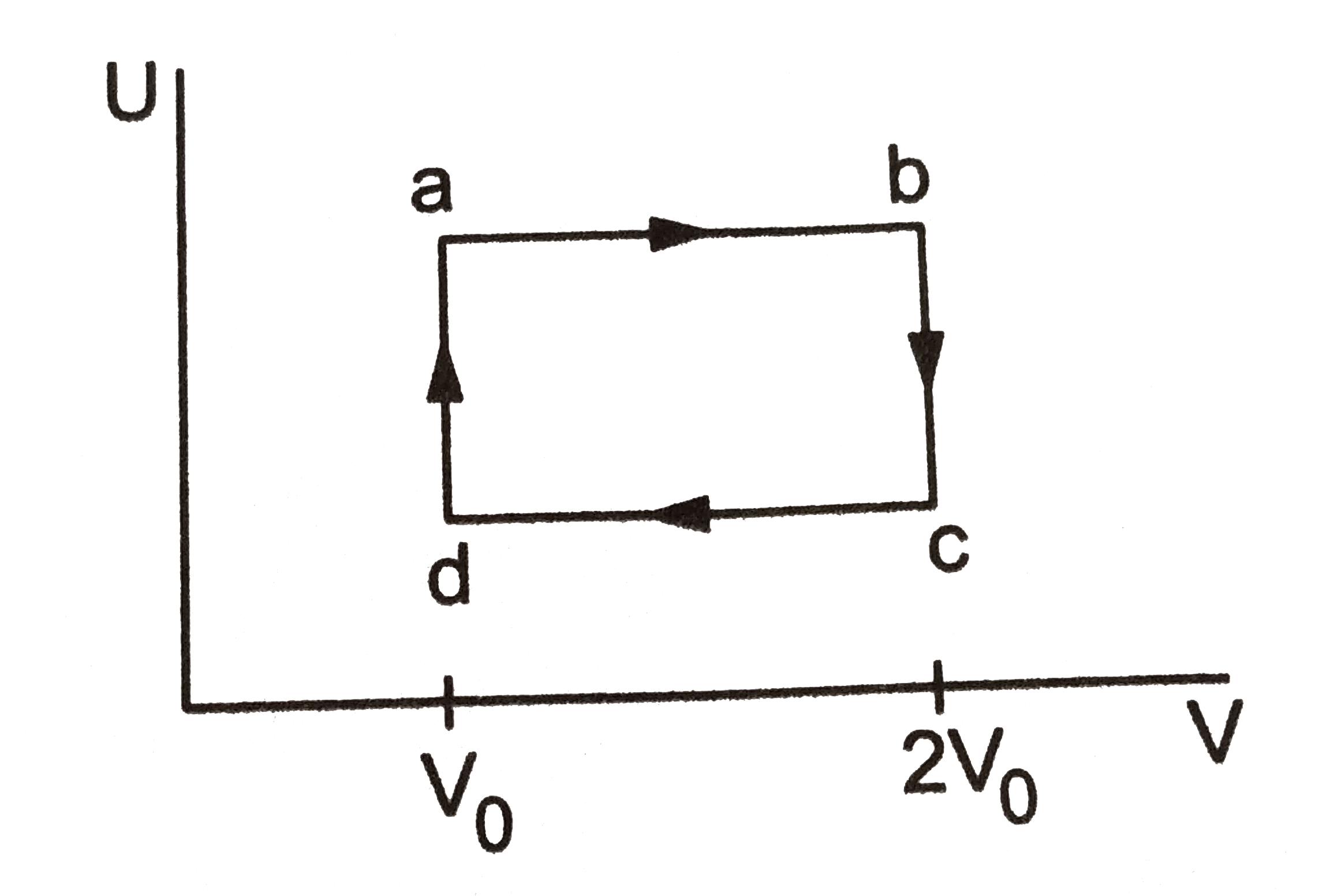 06:21View Solution
06:21View SolutionTwo moles a monatomic gas in state `A` having critical pressure `P_(0)` and temperature `3 T_(0)` is taken to a state `B` having pressure `3 P_(0)` and temperature `T_(0)//3` by the process of equation `P^(2) T` = constant. Then state `B` is taken to state `C` keeping the volume constant and it comes back to initial state `A` keeping temperature constant.
a. Plot a `P` and `T` graph. (P on the y-axis and `T` on the x-axis).
Find the net work done and heat supplied to the gas during the complete cycle.07:10View SolutionA gaseous mixture enclosed in a vessel consists of one gram mole of a gas A with `gamma=(5/3)` and some amount of gas B with `gamma=7/5` at a temperature T.
The gases A and B do not react with each other and are assumed to be ideal. Find the number of gram moles of the gas B if `gamma` for the gaseous mixture is `(19/13)`.03:13View SolutionA gas expands in a piston-cylinder device from volume `V_(1)` to `V_(2)`, the process being described by `P = a//V + b`, a and b are constants. Find the work done in the process.
01:21View Solutionfind the minimum attainable pressure of an ideal gs in the process `T = t_0 + prop V^2`, where `T_(0)n` and `alpha` are positive constants and (V) is the volume of one mole of gas.
06:10View SolutionAir is contained in a piston-cylinder arrangement as shown in Fig. with a cross-sectional area of `4 cm^(2)` and an initial volume of `20 cm^3`. The air is initially at a pressure of 1 atm and temperature of `20^(@)C`. The piston is connected to a spring whose spring constant is `k = 10^(4) N//m`, and the spring is initially underformed. How much heat must be added to the air inside cylinder to increase the pressure to 3 atm (for air, `CV = 718 J//kg.^(@)C`, molecular of air 28.97)?
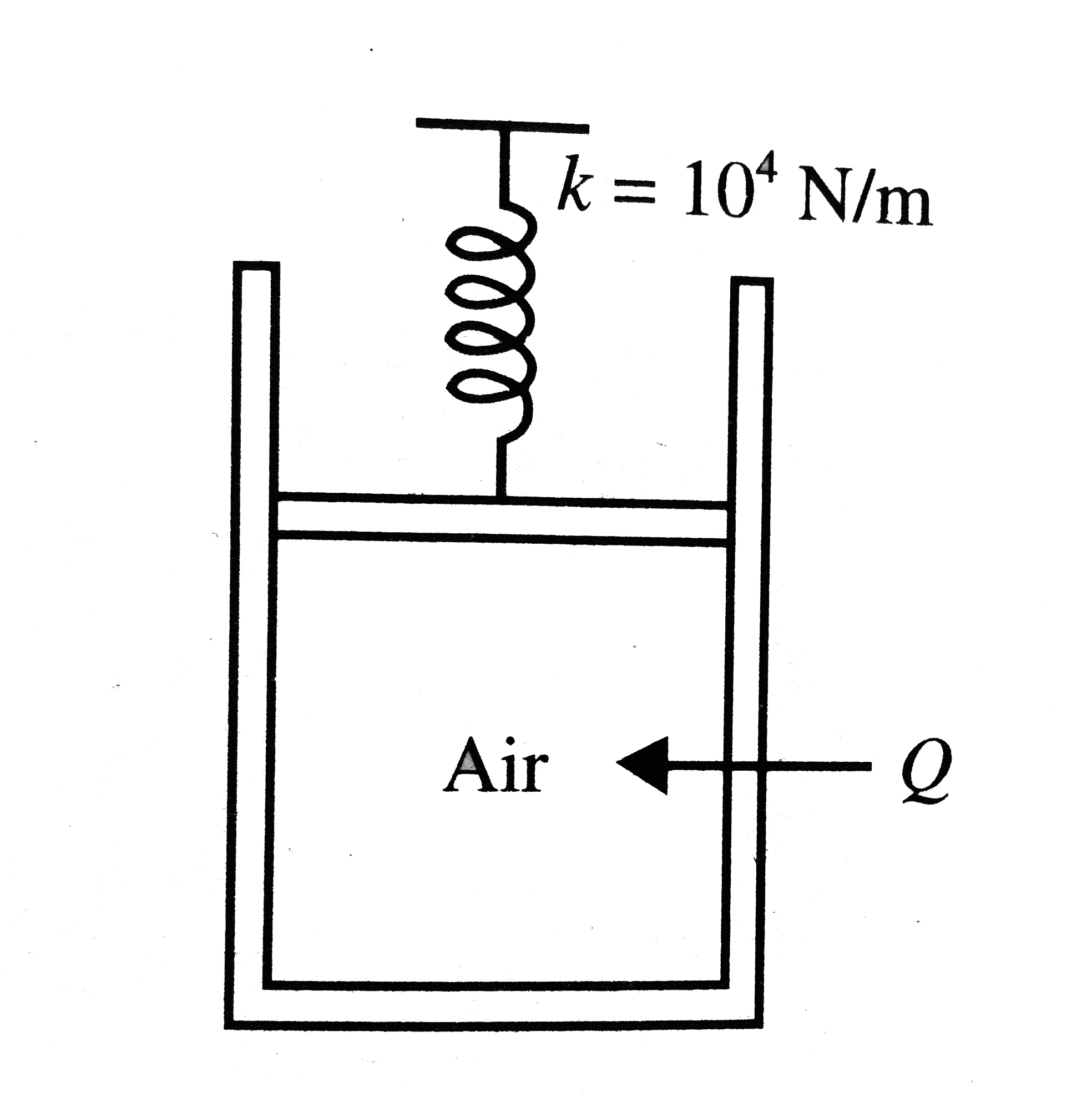 07:20View Solution
07:20View SolutionConsider the cyclic process ABCA, shown in fig, performed on a sample of 2.0 mol if an ideal gas. A total of 1200 J if heat is withdrawn from the sample in the process. Find the work done by the gas during the part BC.
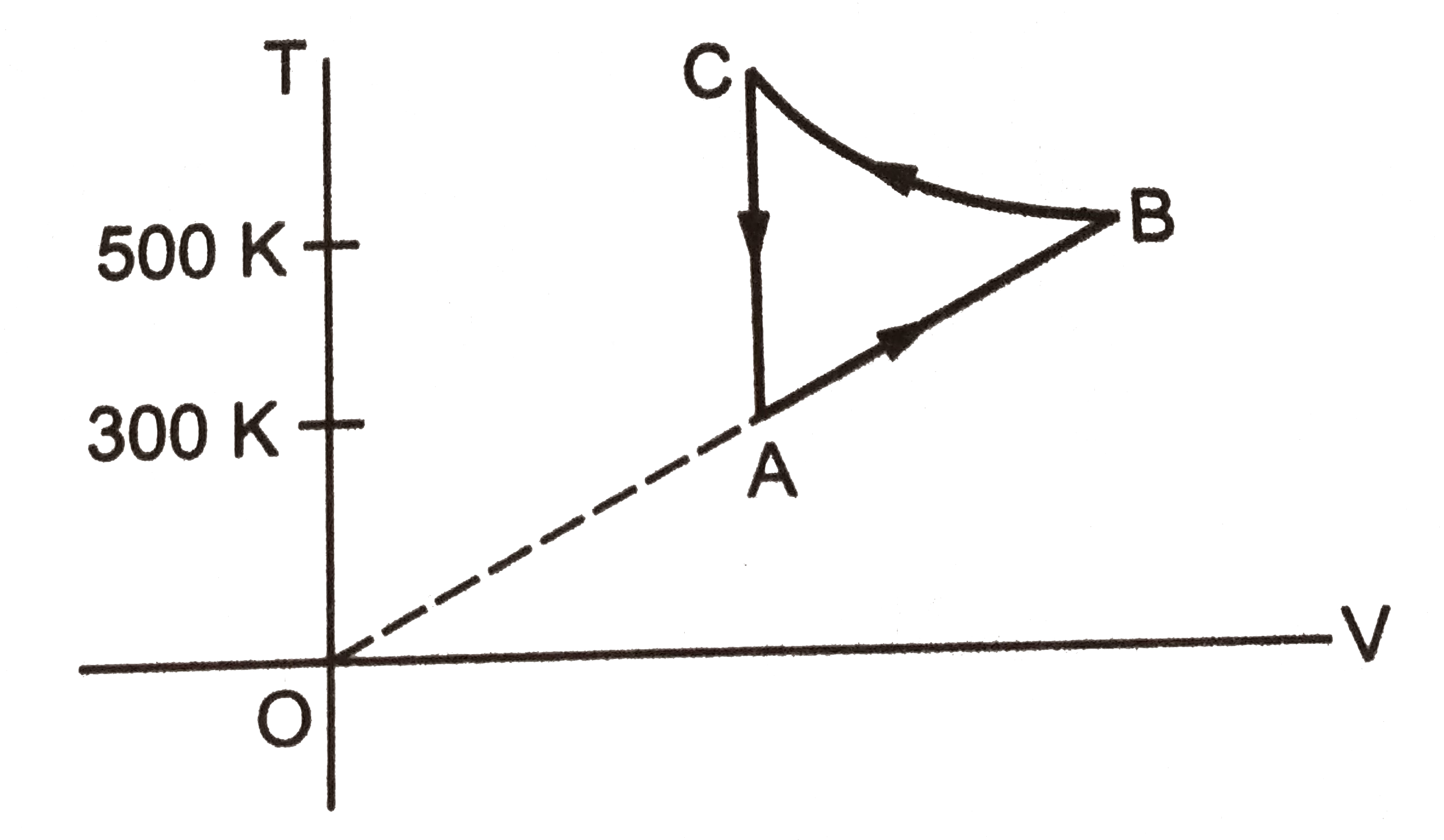 05:10View Solution
05:10View SolutionFig shows the variation in the internal energy U with the volume V of 2.0 mol of an ideal gas in a cyclic process abcda. The temperatures of the gas at b and c are 500 K and 300 K respectively. Calculate the heat absorbed by the gas during the process.
 06:21View Solution
06:21View SolutionOne mole of a gas is carried through the cycle shown in Fig. The gas expands at constant temperature `T` from volume `V` to `2V`. It is them compressed to the initial volume at constant pressure and is finally brought back to its original state by heating at constant volume. Calculate the work done by the gas in complete cycle.
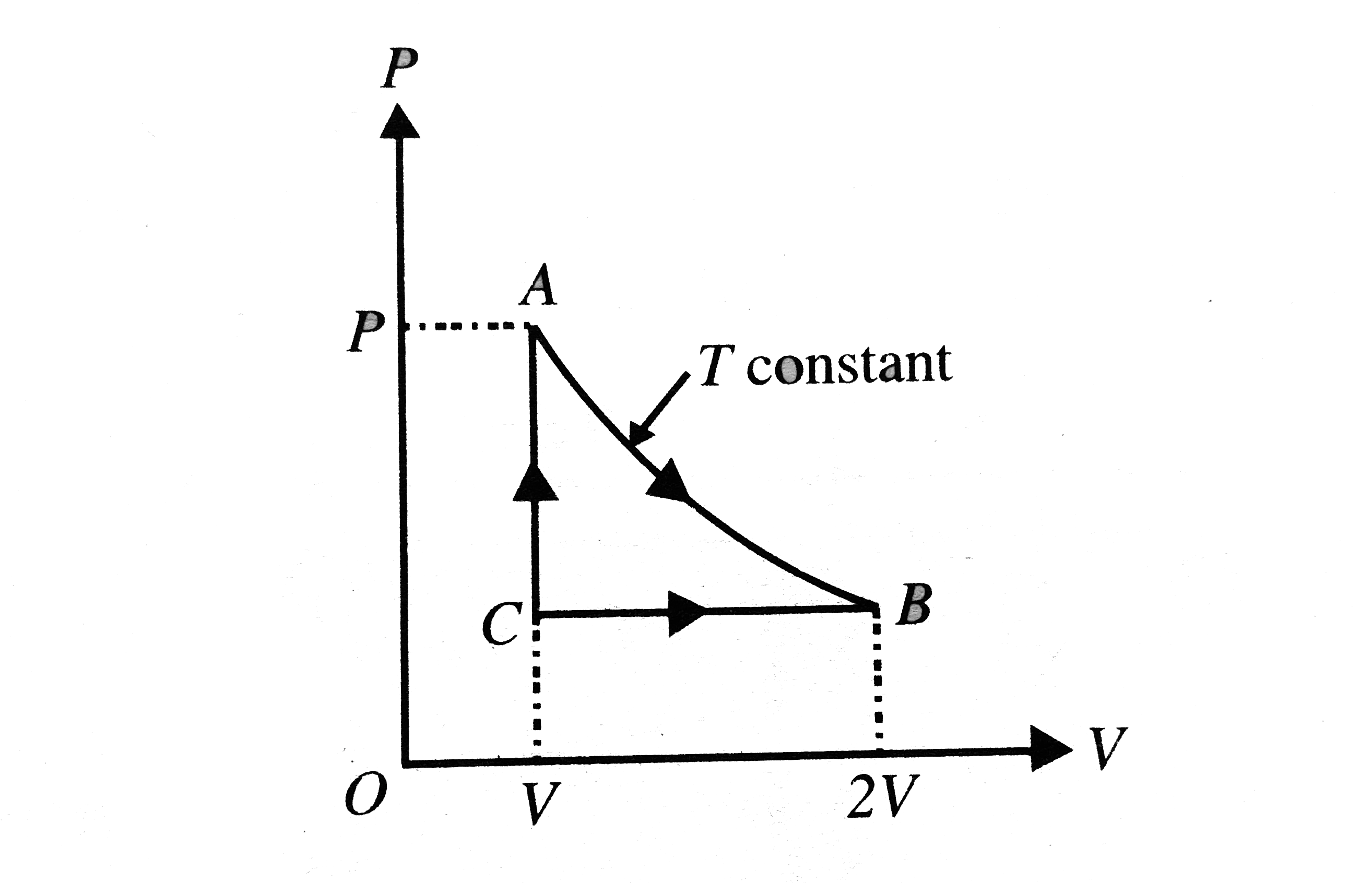 02:33View Solution
02:33View SolutionOne mole of a monatomic gas is taken from a point `A` to another point `B` along the path `ACB`. The initial temperature at `A` is `T_(0)`. Calculate the heat abosrbed by the gas in the process `A rarr C rarr B`.
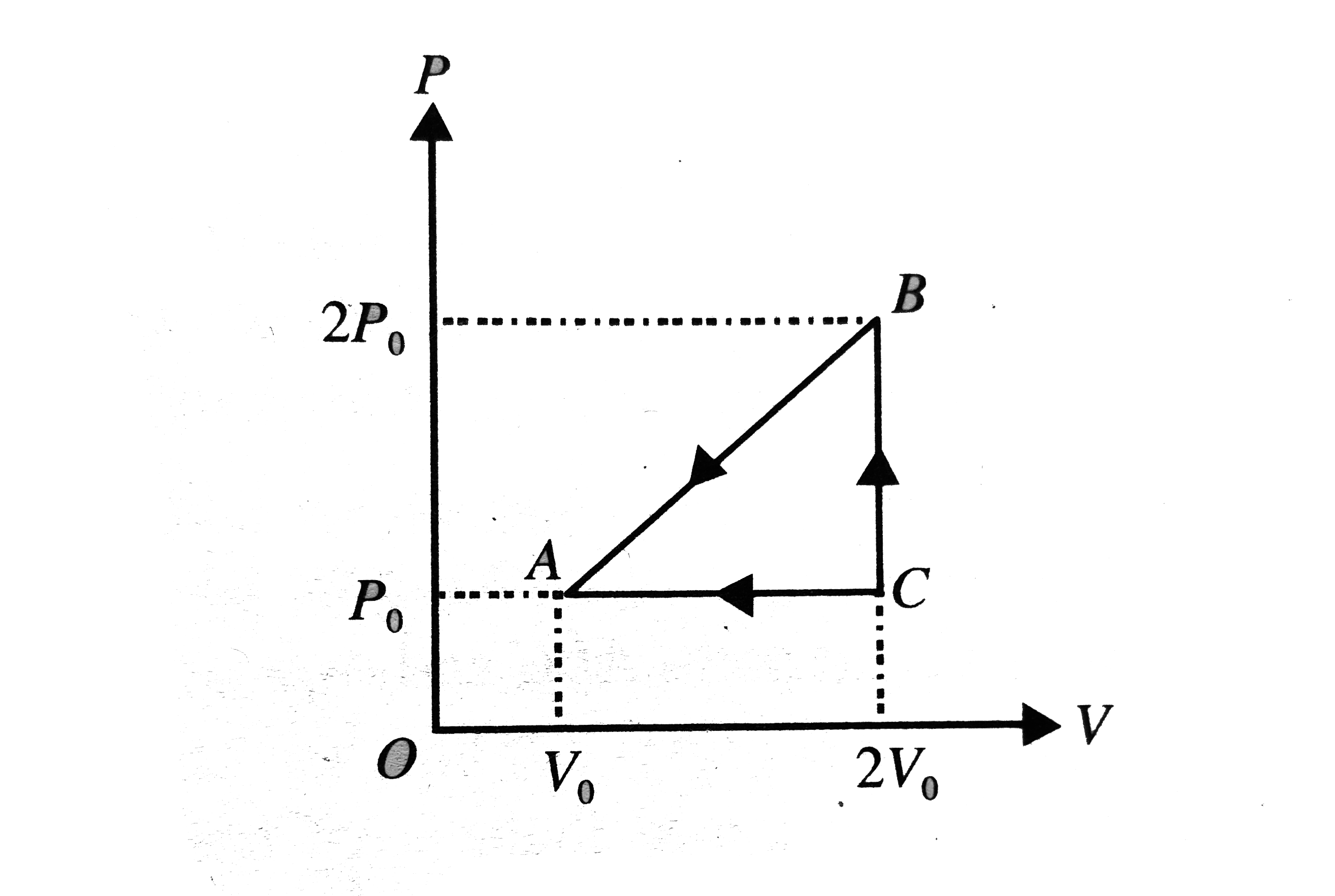 03:31View Solution
03:31View SolutionFigure shows an adiabatic cylindrical tube of volume `(V_0)` divided in two parts by a frictionless adiabatic separator . Initially, the separator is kept in the middle, an ideal gas at pressure `(P_1)` and the temperatures `(T_1)` is injected into the left part and the another ideal gas at pressures `(P_2)` and temperature `(T_2)` is injected into the right part. `(C_p / C_v = gamma)` is the same for both the gases. The separator is slid slowly and is released at a position where it can stay in equilibrium. Find
(a) the volumes of the parts,
(b) the heat given to the gas in the left part and
(c) the final common pressure of the gases.
 06:43View Solution
06:43View SolutionFig. shows a horzontal cylindrical container of length `30 cm`, which is partitioned by a tight-fiting separator. The separator is diathermic but conductws heat very slowly. Initially the separator is the state shown in the figure. The temperature of left part of cylinder is `100 K` and that on right part is `400 K`. Initially the separator is in equilibrium. As heat is conducted from right to left part, of separator after a long when gases on the two displacement of separator after a long when gases on the two parts of cylinder are in thermal equilibrium.
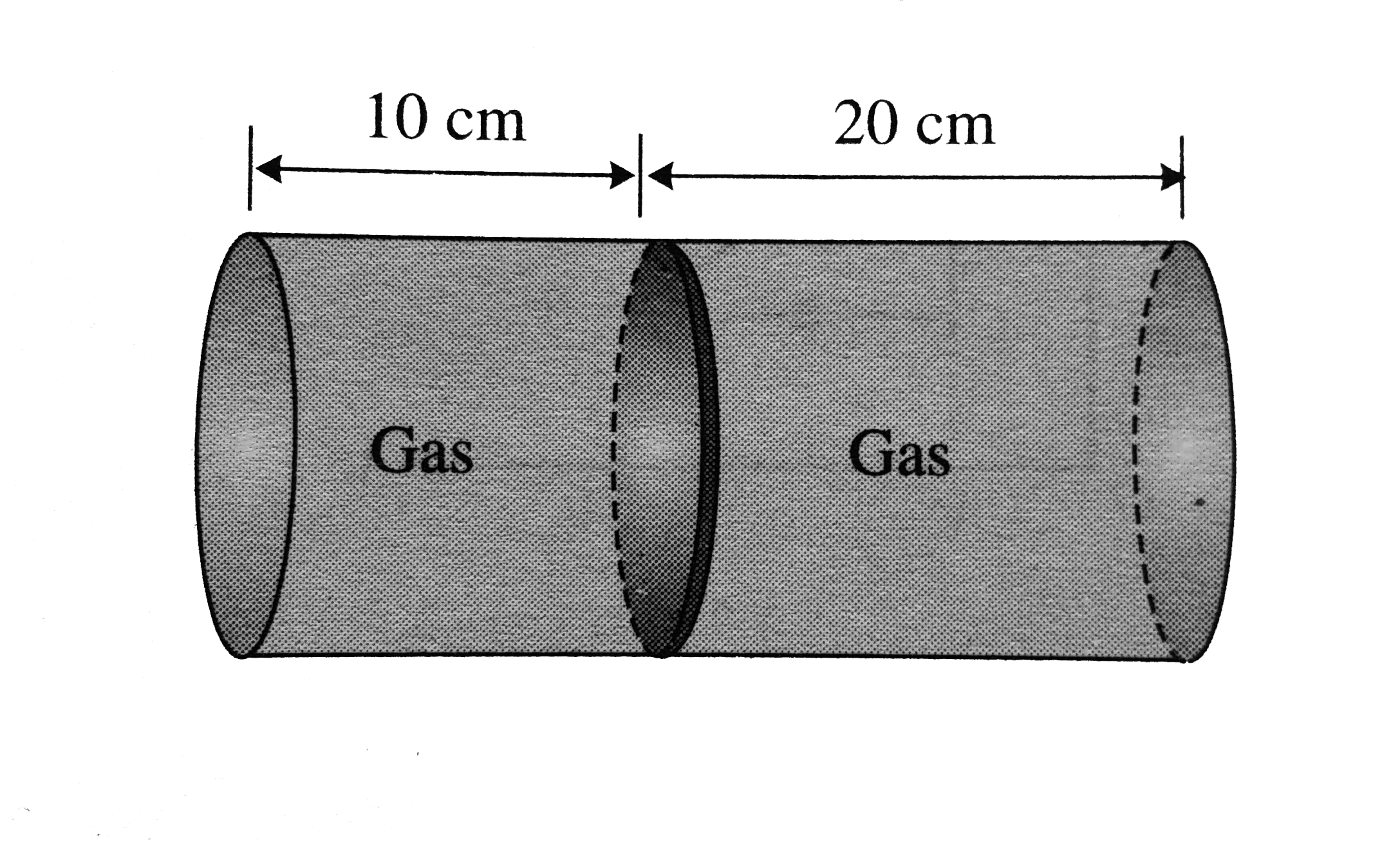 04:54View Solution
04:54View SolutionAs adiabatic vessel contains `n_(1) = 3` mole of diatomic gas. Moment of inertia of each molecule is `I = 2.76 xx 10^(-46) kg m^(2)` and root-mean-square angular velocity is `omega_(0) = 5 xx 10^(12) rad//s`. Another adiabatic vessel contains `n_(2) = 5` mole of a monatomic gas at a temperature `470 K`. Assume gases to be ideal, calculate root-mean-square angular velocity of diatomic molecules when the two vessels are connected by a thin tube of negligible volume. Boltzmann constant `k = 1.38 xx 10^(-23) J//:"molecule"`.
06:27View SolutionFigure shows an ideal gas changing its state `A` to state `C` by two different path `ABC` and `AC`. The internal energy of the gas at `A` is `10 J` and the amount of heat supplied to change its state to `C` through the path `AC` is `200 J`. Find the internal energy at `C`.
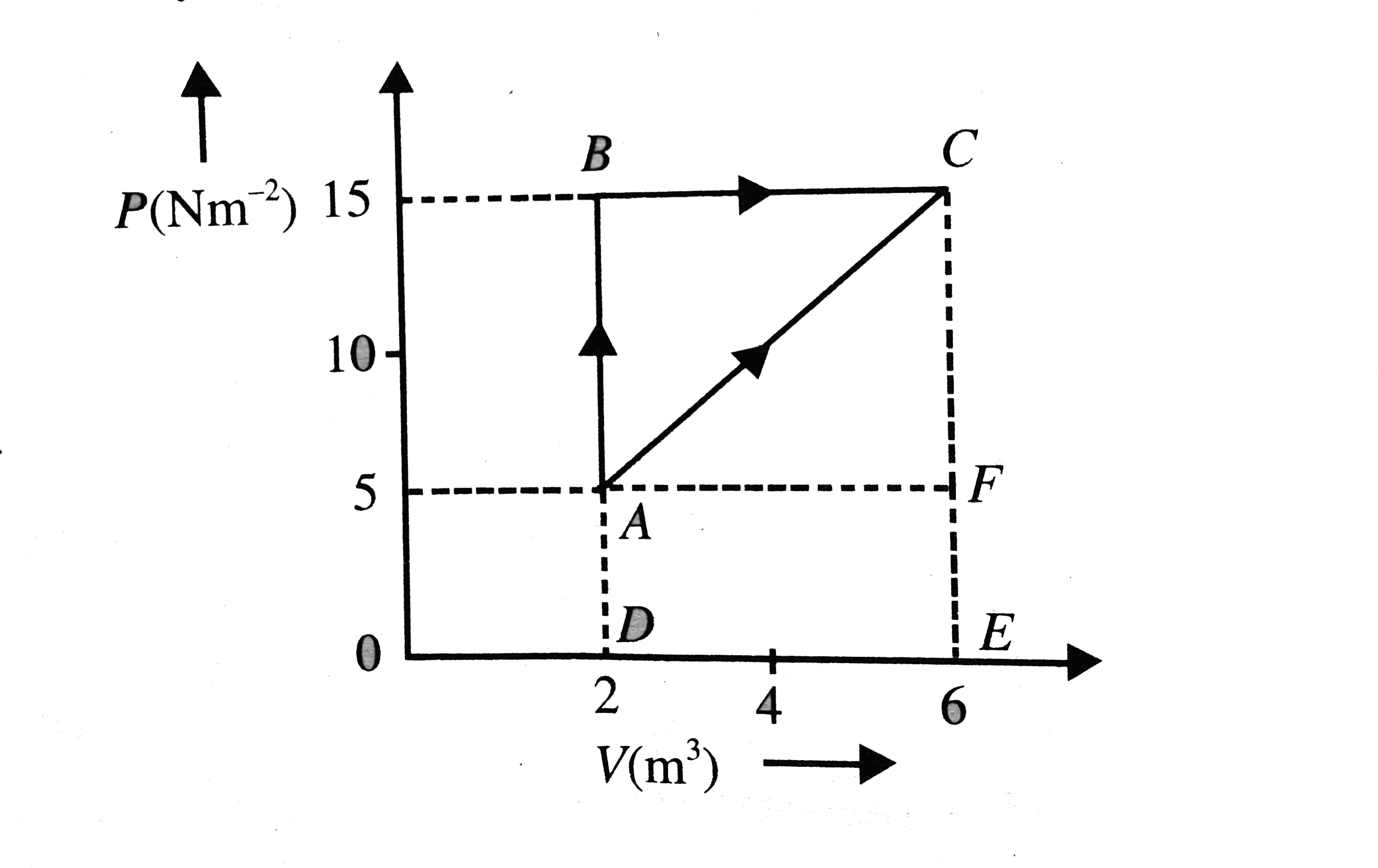 02:37View Solution
02:37View SolutionFig. shows a process `ABCA` performed on 1 mole of an ideal gas. Find the net heat supplied to the gaseous system during the process.
 02:58View Solution
02:58View SolutionCalculate the heat abosrbed by a system in going through the cyclic process show in Fig.
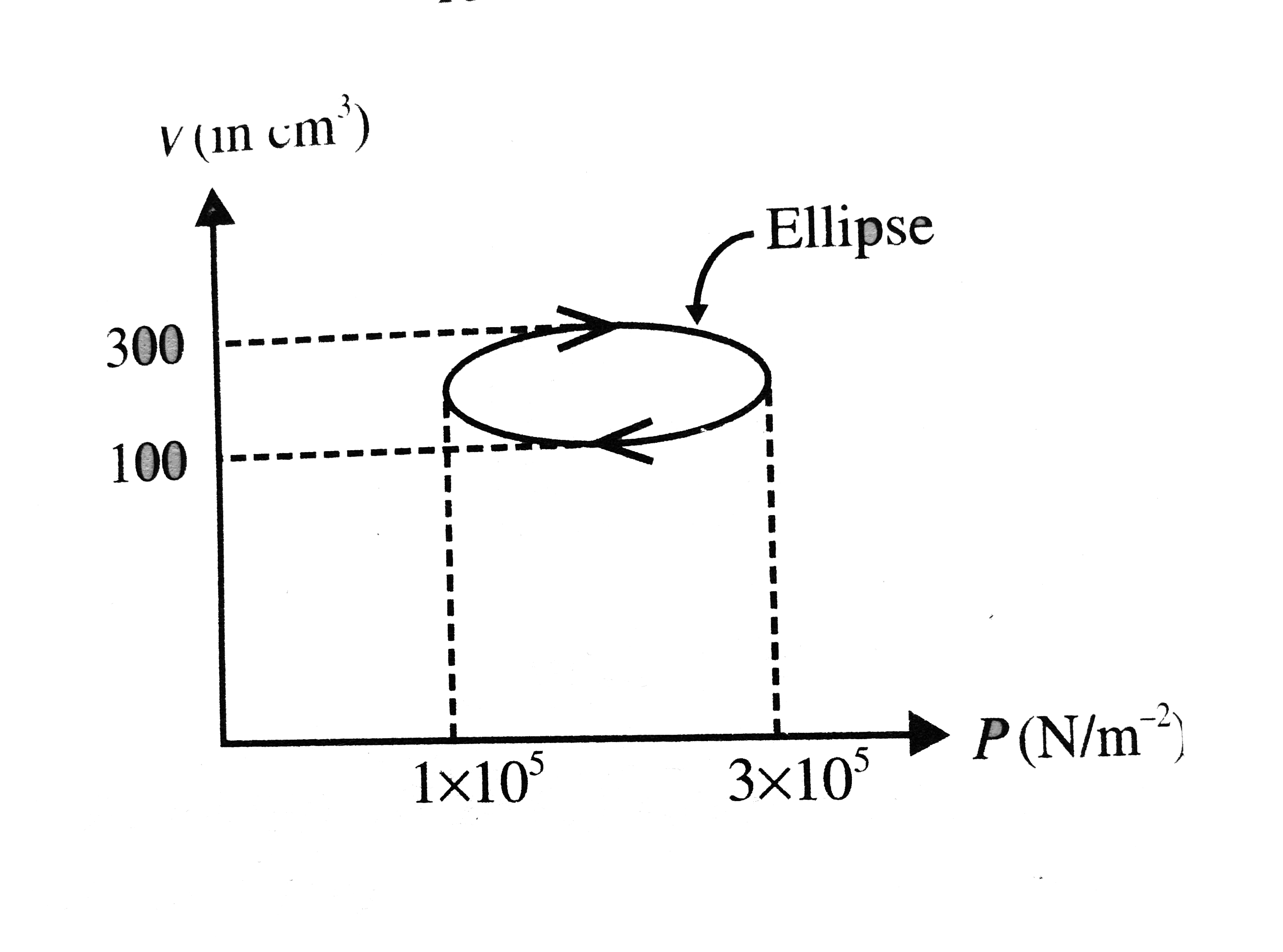 02:44View Solution
02:44View SolutionAn ideal gas has a volume `0.3 m^(3)` at `150 k Pa`. It is confined by a spring-loaded piston in a vertical cylinder. Initially, the spring is in relaxed state. If the gas is heated to a final state of `0.5 m^(3)` and pressure `600 k Pa` find the work done on the spring (atmospheric pressure, `P_(0) = 1 xx 10^(5) N//m^(2))`.
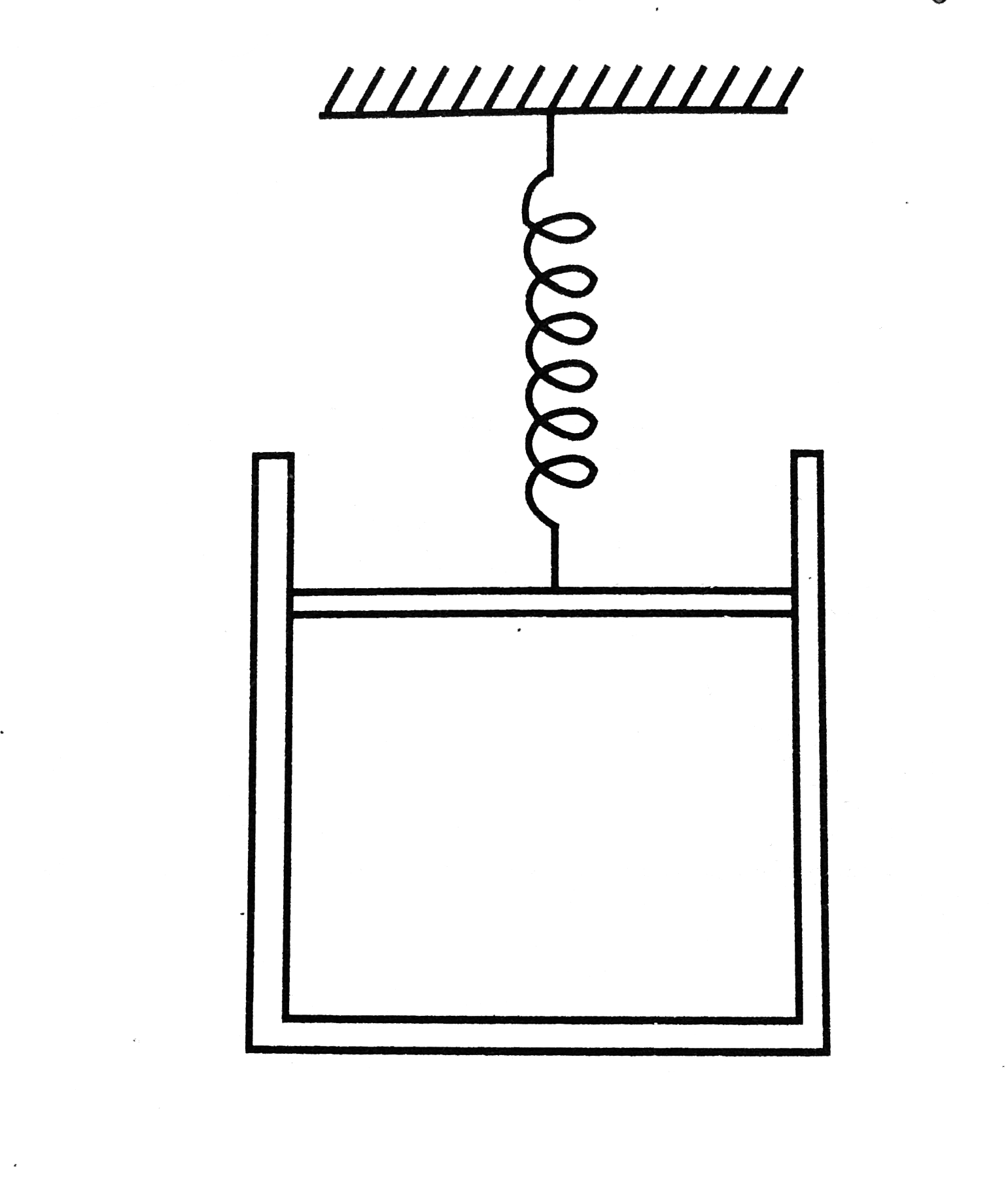 07:22View Solution
07:22View SolutionOne mole of an ideal monatomic gas undergoes the process `p=alphaT^(1//2)`, where `alpha` is a constant.
(a) Find the work done by the gas if its temperature increases by 50K.
(b) Also, find the molar specific heat of the gas.03:32View SolutionTwo moles of monatomic ideal gas is taken through a cyclic process shown on `P - T` diagram in Fig. Process `CA` is represented as `PT` = constant. If efficiency of given cyclic process is
`1 - (x)/(12 1n 2 + 15)`
then find `x`,
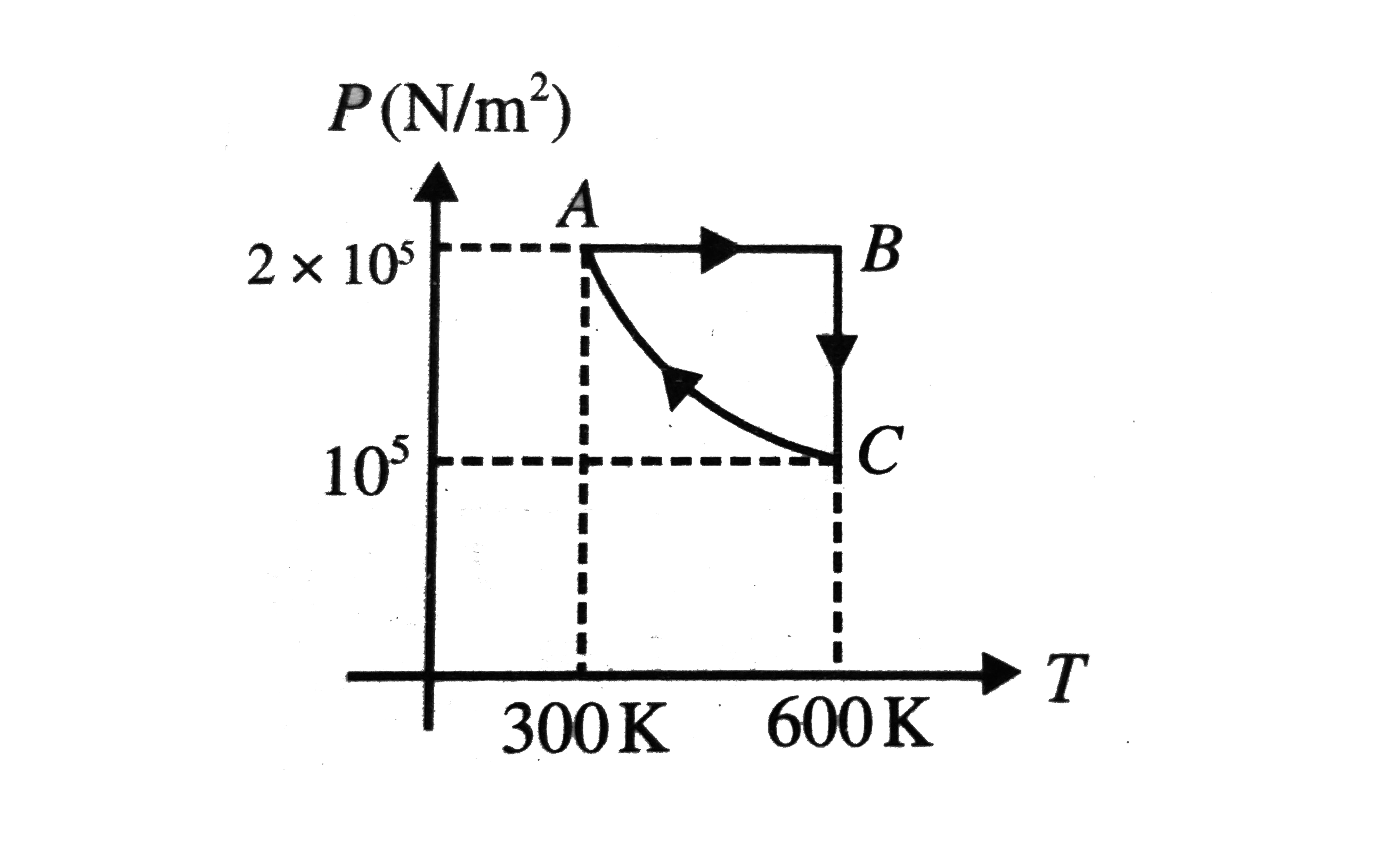 07:40View Solution
07:40View SolutionOne mole of a gas is enclosed in a cylinde in a cyclinder and occupies a volume of `1.5 L` at a pressure 1.5 atm. It is subjected to strong heating due to which temperature of the gas increase according to the relation `T = alpha V^(2)`, where `alpha` is a positive constant and `V` is volume of the gas.
a. Find the work done by air in increasing the volume of gas to `9 L`.
b. Draw the `P - V` diagram of the process.
c. Determine the heat supplied to the gas (assuming `gamma = 1.5)`.06:10View Solution
Subjective questions and complete solutions for chapter KINETIC THEORY OF GASES AND FIRST LAW OF THERMODYNAMICS of CENGAGE PHYSICS (ENGLISH) of Class 11
